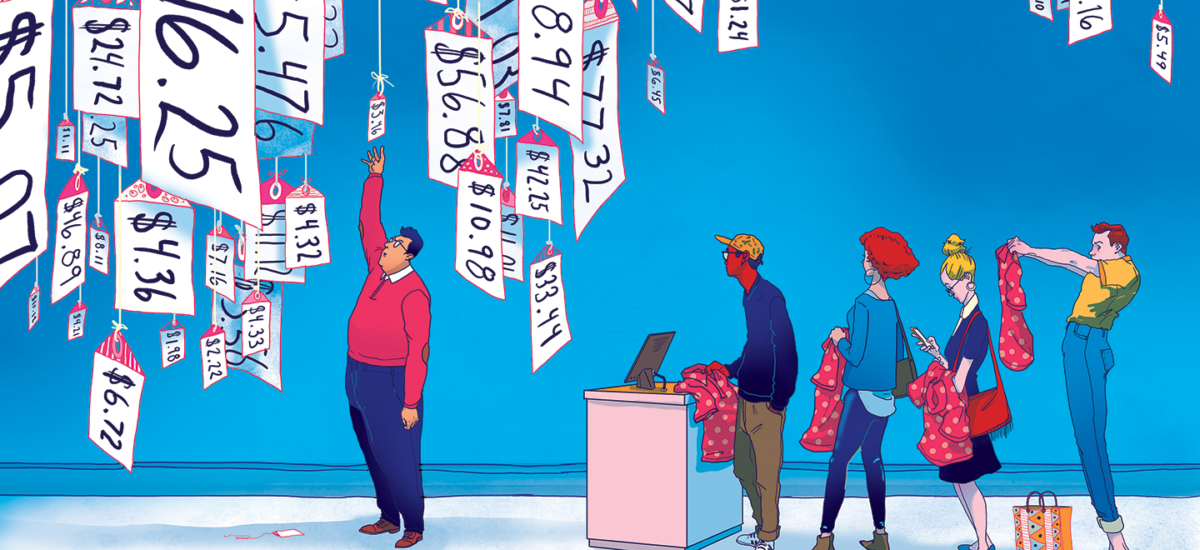Many companies use pricing strategies whereby they charge different prices to different customers, based on personal data. This type of price discrimination is called personalized pricing. Through this pricing strategy, companies are trying to charge a price that is close to the consumers’ willingness to pay in order to increase their profits (Whinston, Stahl & Choi, 1997). Price discrimination has been applied for many years in various sectors. For example, E-commerce companies adjust their prices based on the website visitor’s search history. If they can deduce from the search history that an individual is highly price sensitive, it is likely that this person will see a lower price for the same good than someone who is not being considered as price sensitive (Mikians et al., 2012). Also, different prices are being charged to individuals based on for instance their geographical locations (Borgesius & Poort, 2017). With the emergence of the Internet, firms have gained more access to personal data, making it easier to apply price discrimination (Borgesius & Poort, 2017).
As data has become increasingly important in the digital age, new legislation was introduced in Europe on 28 May 2018. The General Data Protection Regulation (GDPR) aims to improve the protection of personal data by giving people more say in what companies do with their data (Europese Commissie, 2020). This law concerns many organizations, as it covers not only the data that companies have stored in their systems but also the data linked to Cookies and IP Addresses (Den Breejen, 2020).
According to the law, firms are required to be transparent in what is done with consumer data and also need the consent to use the data of the consumer (Borgesius & Poort, 2017). Therefore, the introduction of GDPR has made it more complex for companies to apply price discrimination. Previously, companies could apply price discrimination without website users or consumers being aware of it, in order to make profits. Nowadays, violating GDPR could result in high fines and damage to the company’s reputation (Schoonen, 2020). It is therefore important for companies to comply with the law.
For me, it is questionable whether companies that use personalized pricing can continue to do so while still complying with the General Data Protection Regulation (GDPR). In my opinion, greater transparency in companies’ pricing strategies could evoke feelings of unfairness. Moreover, consumers’ confidence in companies may decrease if they find out that their data is being used for profit objectives. Subsequently, this may lead to a decrease in demand for the product or service.
I am very interested in your opinion on this.
References
Borgesius, F.Z.& Poort, J. (2017). Online Price Discrimination and EU Data Privacy Law. Journal of Consumer Policy, 40(3), 347-366.
Den Breejen, A. (2020). Privacywetgeving AVG, wat moet je ermee? Available at: https://www.kvk.nl/advies-en-informatie/wetten-en-regels/privacywetgeving-avg-wat-moet-je-ermee/ [Accessed 27 September 2020]
Europese Commissie. (2020). Gegevensbescherming in de EU. Available at: https://ec.europa.eu/info/law/law-topic/data-protection/data-protection-eu_nl [Accessed 27 September 2020
Mikians, J., Gyarmati, L., Erramilli, V. & Laoutaris, N. (2012). Detecting price and search discrimination on the internet. Proceedings of the 11th ACM Workshop on Hot Topics in Networks, 79-84. HotNets-XL. ACM. http://doi.acm.org/10.1145/2390231.2390245.
Schoonen, D. (2020). Al 160,000 schendingen van de GDPR gerapporteerd. Available at: https://www.techzine.be/nieuws/security/51890/al-160-000-schendingen-van-de-gdpr-gerapporteerd/ [Accessed 28 September 2020]
Whinston, A., Stahl, D.O., Choi, S.-Y. (1997). Chapter 2: Characteristics of digital products and processes. The Economics of Electronic Commerce. Indianapolis, IN: Macmillan Technical Publishing


Thank you for the great read. Very interesting and very well elaborated.
Regarding your comment about decreased demand, I’d like to add a thought:
Personalized pricing is not always just saying that companies try to make the most profit. It’s more a strategy to make sure to either (1) skim the highest profit possible from clients that are not likely to return or (2) create a loyal and long-term customer through personalized prices, including special offers or discounts. While for the first case I agree with you, that those customers might not return, the second case means a long-time relationship between customer and company. In the short-run, that could mean fewer profits for the company, but in the long-run, the profits will be higher than with the one-time customer. And for the customer, that means, that it’s possible to benefit from better prices than somewhere else.
Therefore, the long-term demand can be stabilized or even increased through the personalized pricing strategy.
Hi Cathelijn,
This is indeed a very tough situation for companies that are trying to make more profit by using the price discrimination strategy in the face of the General Data Protection Regulation, because they can no longer using the consumers’ data arbitrarily. However, by monetizing data to achieve price discrimination is just one of the many ways, and there are still a lot a firm can do to customize product prices. For instance, there’s a website called Priceline, where customers can name their own desired price for a certain trip, and they often end up traveling in their desired price, except that they might suffer connections between several flights. In this way, companies still make profit on customized price using the claimed data instead of the behavior data without taking any risk of violating the law. Anyways, Priceline might be a good example that still works fine in the face of the GDPR, there are still a lot companies suffer from that, so there might be necessary for firms to come up with new ideas on how to achieve larger profit.